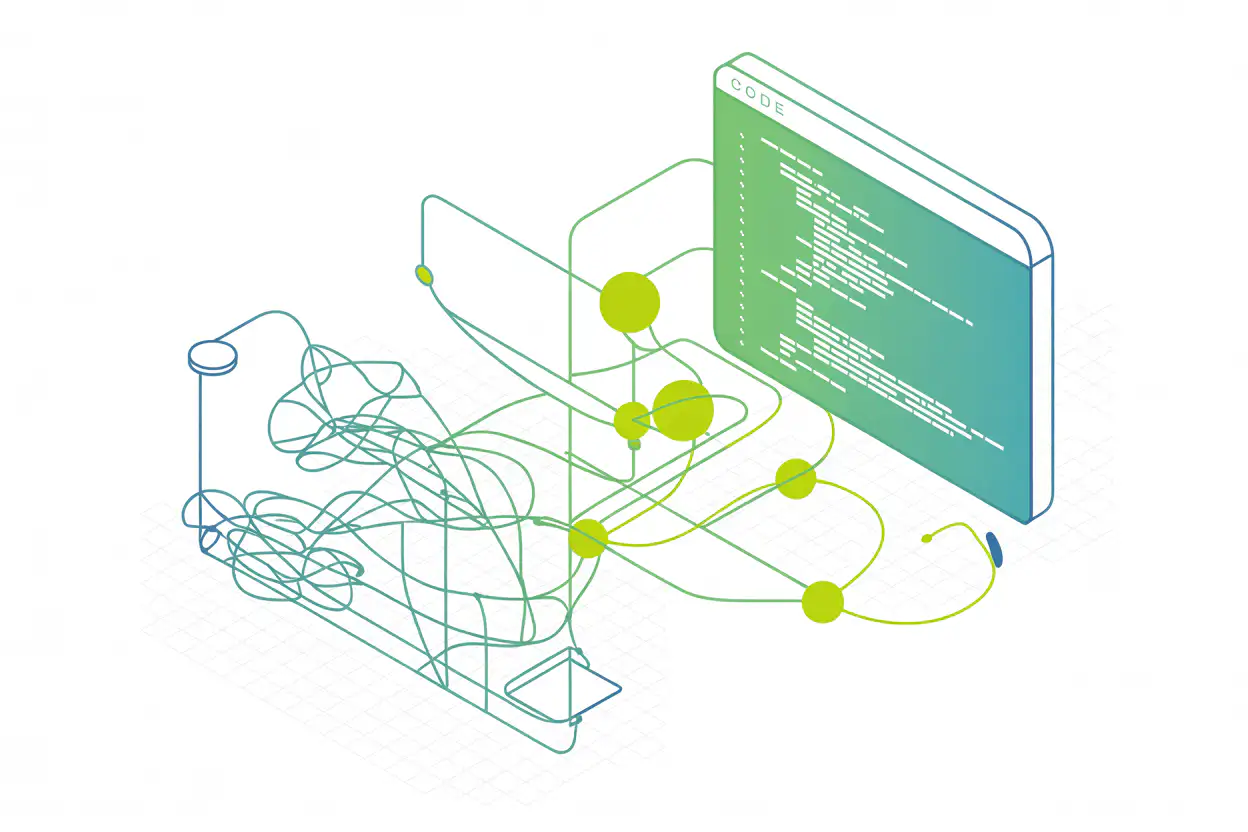TL;DR: AI benchmark results are not verdicts but starting points for deeper investigation. The most valuable insights come not from the scores themselves but from understanding why models succeed or fail, what the performance differences mean in practice, and how results translate to real-world deployment scenarios. Effective interpretation requires recognizing that a 5-point difference between models might be statistically meaningless while a 0.7-point gap at the frontier represents a significant competitive advantage. The key is developing systematic approaches to result analysis that account for statistical significance, practical relevance, failure mode patterns, and the inevitable gap between benchmark performance and real-world utility.
The Illusion of Precision
When GPT-4 scored 67.0% on HumanEval while Claude-3 achieved 65.8%, the technology press declared a winner. The 1.2 percentage point difference became a headline, a talking point, a basis for procurement decisions. What the coverage missed was the statistical reality: without confidence intervals, sample sizes, and significance testing, that difference was likely meaningless noise [1].
This represents the first and most common mistake in interpreting AI benchmark results: treating point estimates as definitive rankings. The reality is far more nuanced. Modern AI evaluation involves inherent randomness—from sampling procedures to model temperature settings to the stochastic nature of generation itself. A model that scores 67% today might score 65% tomorrow with identical settings but different random seeds.
The solution isn't to ignore benchmark results but to interpret them with appropriate statistical rigor. When researchers report confidence intervals, pay attention to overlap. When they don't, be skeptical of small differences. The Stanford AI Index 2025 noted that the top two models are now separated by just 0.7%, while the gap between the top and 10th-ranked models fell from 11.9% to 5.4% in a single year [2]. These numbers suggest that the frontier is becoming increasingly competitive, but they also highlight how small the meaningful differences have become.
Consider what this means practically. If Model A scores 85% ± 3% and Model B scores 82% ± 3% on the same benchmark, the confidence intervals overlap significantly. The "better" model might actually perform worse on your specific use case, with your particular data distribution, under your deployment conditions. The benchmark result provides a starting point for investigation, not a final answer.
The Translation Problem
The most sophisticated challenge in working with benchmark results involves translating abstract performance metrics into practical deployment decisions. A model that achieves 90% on HumanEval might seem obviously superior to one that scores 75%, but this assumes that HumanEval performance predicts success on your specific coding tasks—an assumption that often proves false.
Recent analysis of benchmark-to-deployment translation reveals systematic gaps between evaluation and application performance [3]. Models optimized for benchmark success may excel at the specific types of problems, input formats, and evaluation criteria used in testing while struggling with the messier realities of production deployment.
Consider the case of code generation in enterprise environments. HumanEval tests function-level problem solving with clean specifications and comprehensive unit tests. Real-world coding involves incomplete requirements, legacy system integration, security constraints, performance optimization, and collaborative development practices. A model that excels at HumanEval might generate syntactically correct but practically unusable code in production contexts.
The translation challenge becomes even more complex when comparing results across different benchmarks. A model might score 85% on HumanEval, 72% on MBPP, and 45% on SWE-bench. Which number best predicts performance on your use case? The answer depends entirely on how closely your requirements match each benchmark's characteristics.
Effective result interpretation requires developing systematic approaches to this translation problem. Start by analyzing the specific tasks, input formats, and evaluation criteria used in benchmarks. Compare these characteristics to your intended use case. Look for benchmarks that most closely match your deployment scenario, but recognize that no benchmark will perfectly predict real-world performance.
The Failure Mode Analysis
The most valuable insights from benchmark results often come not from overall scores but from systematic analysis of failure patterns. When a model fails 30% of problems on a coding benchmark, the critical question isn't the failure rate itself but which types of problems cause failures and why.
Sophisticated practitioners develop taxonomies of failure modes that reveal model limitations and guide improvement efforts. For coding benchmarks, these might include syntactic errors, logical mistakes, incomplete solutions, inefficient algorithms, security vulnerabilities, or failure to handle edge cases. Each category suggests different intervention strategies and provides different insights into model capabilities.
Consider the evolution of failure analysis in the SWE-bench benchmark, which tests models on real GitHub issues. Early analysis focused primarily on pass rates—what percentage of issues could models resolve correctly. More sophisticated analysis began categorizing failures by issue type, repository characteristics, code complexity, and required reasoning patterns [4].
This deeper analysis revealed that models struggled disproportionately with issues requiring multi-file changes, understanding of complex codebases, and integration with existing systems. These insights proved far more valuable than overall pass rates for understanding model limitations and guiding development priorities.
The same principle applies across benchmark types. For mathematical reasoning benchmarks, analyze whether failures involve calculation errors, logical reasoning mistakes, or problem comprehension issues. For natural language tasks, examine whether problems stem from factual knowledge gaps, reasoning limitations, or output formatting issues.
Developing systematic failure analysis requires going beyond aggregate metrics to examine individual examples. This is labor-intensive but essential for extracting actionable insights from benchmark results. The most sophisticated organizations maintain detailed failure databases that track patterns across models, benchmarks, and time periods.
The Comparative Analysis Framework
Effective benchmark result interpretation requires systematic approaches to model comparison that go beyond simple ranking. The most valuable comparisons consider multiple dimensions simultaneously: performance across different task types, consistency across evaluation runs, computational efficiency, and practical deployment characteristics.
Performance profile analysis reveals how models perform across different types of tasks within the same benchmark. A model might excel at algorithmic problems while struggling with string manipulation, or perform well on short functions while failing on longer implementations. These patterns provide crucial insights for deployment decisions.
Consistency analysis examines performance stability across multiple evaluation runs, different prompt formulations, and various input formats. A model that achieves high average performance but with high variance might be less suitable for production deployment than a slightly lower-performing but more consistent alternative.
Efficiency analysis considers the computational resources required to achieve benchmark performance. A model that scores 85% while using half the computational resources of a 87%-scoring alternative might represent better practical value, especially for large-scale deployment scenarios.
The most sophisticated comparative analysis involves creating performance profiles that capture these multiple dimensions simultaneously. Rather than ranking models by single metrics, develop multidimensional assessments that reflect the trade-offs relevant to your specific use case.
The Temporal Dimension
Benchmark results exist in time, and their interpretation must account for the rapid pace of AI development. A model that achieved state-of-the-art performance six months ago might be significantly outperformed by newer alternatives. More subtly, benchmark results from different time periods may not be directly comparable due to changes in evaluation procedures, benchmark versions, or community standards.
The Stanford AI Index 2025 documented dramatic performance improvements across major benchmarks in just one year: 18.8 percentage points on MMMU, 48.9 points on GPQA, and 67.3 points on SWE-bench [5]. These improvements suggest that benchmark results have short half-lives—they provide snapshots of capability at specific moments rather than enduring assessments of model quality.
This temporal dimension has practical implications for result interpretation. When evaluating models for deployment, prioritize recent results over historical performance. When tracking progress over time, ensure consistent evaluation conditions and account for benchmark evolution. When comparing results from different sources, verify that they use comparable benchmark versions and evaluation procedures.
The most sophisticated practitioners maintain temporal performance databases that track model capabilities over time. This enables identification of improvement trends, performance regressions, and the impact of model updates on specific capabilities.
The Aggregation Challenge
Modern AI evaluation increasingly involves multiple benchmarks, creating challenges in aggregating results into coherent assessments. A model might rank first on one benchmark, third on another, and seventh on a third. How should these results be combined to support decision-making?
Simple averaging approaches often prove misleading because they assume equal importance across benchmarks and ignore the different scales and distributions of scores. Weighted averaging requires explicit decisions about benchmark importance that may not align with actual use case requirements.
More sophisticated aggregation approaches consider benchmark characteristics, score distributions, and practical relevance. Some practitioners use ranking-based aggregation that focuses on relative performance rather than absolute scores. Others develop custom weighting schemes based on how closely different benchmarks match their specific requirements.
The most advanced approaches avoid aggregation entirely, instead maintaining multidimensional performance profiles that preserve the richness of individual benchmark results while enabling systematic comparison across models.
The Confidence Calibration Problem
One of the most overlooked aspects of benchmark result interpretation involves understanding model confidence calibration—how well models' expressed confidence correlates with actual correctness. A model might achieve high accuracy on a benchmark while being poorly calibrated, expressing high confidence in incorrect answers and low confidence in correct ones.
Poor calibration has serious implications for practical deployment. In coding applications, a poorly calibrated model might generate confident but incorrect code, creating debugging challenges and potential security vulnerabilities. Well-calibrated models provide more useful uncertainty estimates that enable better human-AI collaboration.
Recent research has revealed systematic calibration problems across many AI models, particularly on challenging benchmarks [6]. Models often exhibit overconfidence on difficult problems and underconfidence on easy ones. These calibration issues aren't captured by standard accuracy metrics but significantly impact practical utility.
Effective result interpretation requires examining calibration alongside accuracy. Look for benchmarks that report calibration metrics like expected calibration error or reliability diagrams. When these aren't available, consider conducting calibration analysis on subsets of benchmark data relevant to your use case.
The Human-AI Performance Gap
Understanding benchmark results requires recognizing the complex relationship between AI performance and human capabilities. Benchmarks often report human baseline performance, but these comparisons can be misleading without careful consideration of the evaluation conditions and human expertise levels.
Consider coding benchmarks where AI models now exceed average human performance on certain tasks. This doesn't necessarily mean the models are better programmers—it might reflect the specific types of problems chosen for evaluation, the time constraints imposed, or the particular human populations used for comparison.
More sophisticated analysis examines where AI excels relative to humans and where humans maintain advantages. Models might outperform humans on algorithmic problem-solving while struggling with code review, system design, or collaborative development practices that aren't captured in current benchmarks.
The most valuable insights come from understanding complementary capabilities rather than direct competition. Effective deployment often involves human-AI collaboration that leverages the strengths of both, rather than replacement of human capabilities with AI alternatives.
The Deployment Reality Check
The ultimate test of benchmark result interpretation involves translating evaluation insights into successful deployment outcomes. This requires systematic approaches to bridging the gap between benchmark performance and real-world utility.
Effective deployment planning begins with identifying the specific capabilities tested by relevant benchmarks and mapping these to actual use case requirements. This mapping reveals both alignment and gaps between evaluation and application scenarios.
Pilot deployment programs provide crucial reality checks for benchmark-based predictions. Start with limited deployments that enable systematic comparison between benchmark performance and practical utility. Track metrics that matter for your specific use case, not just those measured by standard benchmarks.
The most sophisticated practitioners develop custom evaluation frameworks that complement standard benchmarks with use-case-specific assessments. These might include user satisfaction metrics, task completion rates, error recovery capabilities, and integration success measures.
The Continuous Improvement Loop
Effective use of benchmark results requires treating evaluation as an ongoing process rather than a one-time assessment. The most valuable insights emerge from systematic tracking of performance over time, across different conditions, and in response to model updates or deployment changes.
Establish baseline performance measurements that enable tracking of improvement or regression over time. Monitor performance across different user populations, use cases, and deployment scenarios. Track the relationship between benchmark performance and practical outcomes to refine your interpretation frameworks.
The most advanced practitioners develop feedback loops that use deployment outcomes to improve benchmark selection and interpretation. Real-world performance data informs decisions about which benchmarks best predict practical utility, how to weight different evaluation criteria, and where to focus improvement efforts.
This continuous improvement approach treats benchmark results not as final verdicts but as data points in an ongoing process of capability assessment and system optimization. The goal isn't perfect prediction but rather systematic improvement in the alignment between evaluation and deployment outcomes.
Practical Guidelines for Result Interpretation
Effective benchmark result interpretation begins with systematic documentation of evaluation conditions, including model versions, benchmark versions, evaluation procedures, and statistical parameters. This documentation enables meaningful comparison across time periods and different evaluation contexts.
Always examine confidence intervals and statistical significance when available. Treat point estimates without uncertainty measures as preliminary rather than definitive. When comparing models, focus on differences that are both statistically significant and practically meaningful.
Develop systematic approaches to failure analysis that go beyond aggregate metrics to examine specific failure patterns and their implications for your use case. Maintain databases of failure modes that enable tracking of improvement over time and across different models.
Consider multiple benchmarks simultaneously rather than relying on single metrics. Develop weighting schemes or aggregation approaches that reflect the relative importance of different capabilities for your specific requirements.
Supplement benchmark results with custom evaluations that reflect your specific use case characteristics. Use pilot deployments to validate benchmark-based predictions and refine your interpretation frameworks based on real-world outcomes.
Most importantly, maintain appropriate humility about what benchmark results can and cannot tell us. They provide valuable but limited insights into AI capabilities. The most sophisticated practitioners use benchmark results as one input among many in comprehensive capability assessment and deployment decision-making processes.
The future of AI development depends not just on achieving higher benchmark scores but on developing more sophisticated approaches to interpreting and acting on evaluation results. This requires treating benchmark interpretation as both a technical skill and a form of scientific reasoning—essential for anyone working to translate AI capabilities into practical value while managing the risks and limitations inherent in current evaluation approaches.
References
[1] Chen, M., Tworek, J., Jun, H., Yuan, Q., Pinto, H. P. D. O., Kaplan, J., ... & Zaremba, W. (2021). Evaluating large language models trained on code. https://arxiv.org/abs/2107.03374
[2] Stanford HAI. (2025). The 2025 AI Index Report. https://hai.stanford.edu/ai-index/2025-ai-index-report
[3] Kaplan, M. (2024). How to build AI benchmarks that evolve with your models. https://labelstud.io/blog/how-to-build-ai-benchmarks-that-evolve-with-your-models/
[4] Jimenez, C. E., Yang, J., Wettig, A., Yao, S., Pei, K., Press, O., & Narasimhan, K. (2024). SWE-bench: Can language models resolve real-world GitHub issues? https://arxiv.org/abs/2310.06770
[5] Stanford HAI. (2025). The 2025 AI Index Report. https://hai.stanford.edu/ai-index/2025-ai-index-report
[6] Fisher, S. (2025). The benchmark trap: Why AI's favorite metrics might be misleading us. https://www.vktr.com/ai-market/the-benchmark-trap-why-ais-favorite-metrics-might-be-misleading-us/





.webp)







